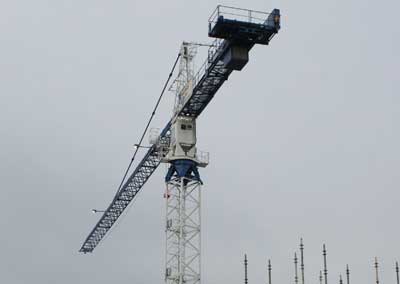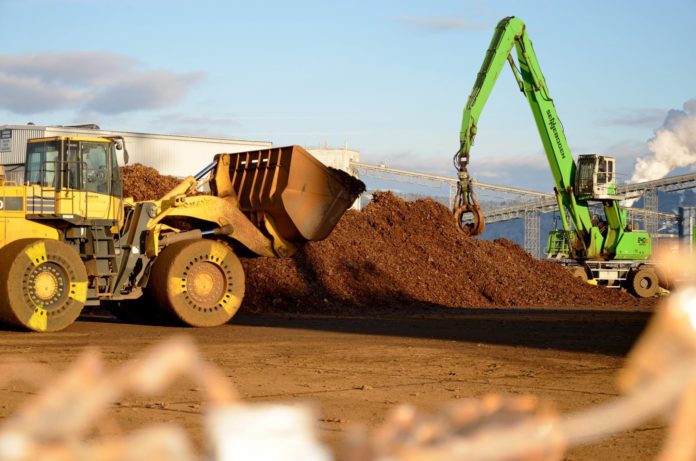2016 was a strong economic year for much of Southwest Washington. Mike Bomar, executive director of the Columbia River Economic Development Council (CREDC), said that he is “very hopeful for continued success in 2017.”
However, several challenges could hinder development, including uncertainty in the permitting process, the shortage of ready-to-go industrial space and increased congestion on key arterials.
Clark County: Economy strong, teamwork key to continued success
“The state of our economy is very strong,” said Bomar.
The acceleration of the Steigerwald Commerce Center is a good example. The Port of Camas-Washougal has started Phase 2 several years ahead of schedule in response to continued demand for industrial space in the region. The port is also designing a new 50,000-square-foot building to be completed next year, and is working on the master plan for the former Hambleton Lumber waterfront site.
Fifteen miles to the west, construction on the M.J. Murdock Charitable Trust building and the iconic waterfront park in Vancouver continues apace, and 2017 will see additional buildings take shape.
“It’s exciting to see the redevelopment of our waterfronts,” said Bomar. “I feel that we are elevating our communities to world-class status by leveraging the natural features and beauty of our area.”
The Port of Vancouver has begun construction on the 125,000-square-foot Centennial Industrial Building. When complete in mid-2017, it will be able to house up to five tenants and will be ideal for companies in advanced manufacturing, warehousing and distribution. The port also has high hopes for the proposed Vancouver Energy project, increasing wind-energy business and their Terminal One Project.
Construction is moving ahead at a frenetic pace in the northern part of the county at the ilani Casino; the 368,000-square-foot facility, featuring 3,000 slot machines and 135 gaming tables, is slated to open this coming spring. Nearby in Ridgefield, significant upcoming projects include a Clark College satellite campus, a new PeaceHealth facility and the commercial development of the Port of Ridgefield’s 40-acre waterfront site.
All this economic development is exciting – but local experts are concerned about several issues.
David Ripp, Port of Camas-Washougal executive director, stated that “companies are spending a lot of time getting their product out of the area” due to infrastructure limitations. He’d like to see the transportation flow improved both to the north and to the south. Since 2000, Clark County’s population has grown 30.9 percent – but no significant infrastructure has been added, like extra lanes on I-5, since Padden Parkway was completed in the late 90s.
“We anticipate transportation will continue to drive economic development discussions in 2017,” said Bomar.
The CREDC published an Employment Land Study and kicked off a Clark County Economic Development Plan update in 2016. Marc Boldt, Board of County Councilors chair, hopes these will educate businesses about what’s available in our county and drive further development. However, Boldt is concerned about the eventual fate of the proposed 600-acre Rural Industrial Land Bank near Brush Prairie.
“The county’s number one job is to provide infrastructure, but before that we have to supply land,” said Boldt.
He also pointed out that water may become an issue in 2017, based on a recent Washington State Supreme Court decision in Whatcom County. This decision set a precedent that counties must prove there is enough available water before issuing permits for new developments in rural areas.
“We’ve had one work session on [this topic] and I think it will require a full-time person to study how to prove availability of water,” Boldt stated.
To surmount some of these challenges, teamwork is critical. Boldt said that the board is working with local mayors to create “a more cohesive government with the same message and consistent codes.”
According to Julianna Marler, Port of Vancouver interim CEO, the ports of Vancouver, Camas-Washougal and Ridgefield have been partnering to support transportation improvements, legislation and funding programs that help our region be an energetic and attractive business location.
“Our three ports are really leading the way to show how working together as a community can add clarity and momentum on advancing key projects and in marketing the region to the world,” said Bomar.
He added that county leaders must educate teachers, parents and mentors about changing industry needs and how to best motivate and prepare the emerging workforce for the jobs of tomorrow.
Cowlitz County: Capital investment up, unemployment rate down
 2017 promises to be a good year for Cowlitz County, according to Commissioner Mike Karnofski. From the county’s southernmost city of Woodland, north to Castle Rock, projects abound. Karnofski said that county-wide, housing starts (through October 2016) are up 30 percent over 2015. The county’s unemployment rate is down to 7.2 percent (but still above the state average of 5.3 percent). 1,364 new jobs were added in the county in 2016 and total potential industrial investment is about $4 billion.
2017 promises to be a good year for Cowlitz County, according to Commissioner Mike Karnofski. From the county’s southernmost city of Woodland, north to Castle Rock, projects abound. Karnofski said that county-wide, housing starts (through October 2016) are up 30 percent over 2015. The county’s unemployment rate is down to 7.2 percent (but still above the state average of 5.3 percent). 1,364 new jobs were added in the county in 2016 and total potential industrial investment is about $4 billion.
“This is by far the most capital investment since I’ve came here in 2000,” said Ted Sprague, executive director of the Cowlitz County Economic Development Council. “We’re very excited.”
Woodland may be home to a future large grain elevator project, while Kalama is excited about their new McMenamin’s facility which has already broken ground and plans to open in November 2017.
The final environmental impact statement for the $1.8 billion NW Innovation Works methanol plant is complete, as is a draft of the air quality permits, which will be discussed at a January 4 public hearing. The $180 million “3rd Rail” project is set to be finished in 2017, and will allow trains to move more easily from the Longview junction through the Kalama congestion area.
The Anchor Point heavy industrial site in Kelso is moving forward and for the first time in Karnofski’s memory all the hangars at the Southwest Washington Regional Airport are leased – the facility is considering building more hangars. Castle Rock’s downtown vacancy rate has decreased from 50 percent to about 15 percent.
The final EIS for Longview’s proposed Millennium Project (coal export terminal) will be published this spring. The Port of Longview is repositioning Berths 1 and 2 for new business, and is working on a long-term plan for the 200-acre Barlow Point property. Probably most heartening for Longview is the continued operation of the Weyerhaeuser Co. pulp & paper facilities, which changed ownership in 2016.
“These facilities are really important to the community – each employs 450-500 people,” said Karnofski.
But with growth comes challenges. The county is continuing to improve its infrastructure, such as the $85 million 432/433 Corridor project. After a public meeting in January, the project will enter the environmental phase. Karnofski said that the county has also received $4.2 million in grants for improving the intersection of Tenant Way and 3rd Ave.
Sprague said that the biggest challenge facing Cowlitz County is the “consistency and timeliness of permitting.” For example, the Millennium Bulk Terminal has been in the permitting phase for almost five years. “There doesn’t seem to be a real urgency on behalf of our permitting partners,” said Sprague.
Cowlitz County must solve two other critical issues in 2017: a shortage of higher-value housing and multi-family housing, and a growing homeless problem.
“We have not permitted [a multi-family project] in six years,” Karnofski stated, but added that the City of Kalama is working with a developer to develop an 80-unit housing development. He also said that Cowlitz County has one of the highest opioid death rates in the state.
“Things are looking up,” said Karnofski, “but we have some issues to work on.”
Skamania County: Shortage of housing, light industrial property and skilled workers
Pat Albaugh, executive director of the Port of Skamania, is excited by the potential of several projects, but frustrated with hurdles that are preventing progress. For example, the port has invested $1 million in infrastructure at their 30+ acre North Bonneville site, but lacks a 20-foot easement from the Corps of Engineers for emergency egress. Until that is solved, the project can’t pull a building permit. The project is a critical part of the county’s plan to add more light industrial property.
“There’s a real shortage of that in our county,” said Albaugh. “All of our light industrial property is full.”
Other projects around the county include the following:
The port is renting out individual offices in their Stevenson office space as incubator space for startups.
At the Wind River Business Park, the county is negotiating with the U.S. Forest Service to convey additional property, including some badly needed housing vacated by Forest Service employees.
Vancouver-headquartered environmental consulting firm Maul Foster Alongi is working with the county to redevelop the 6-acre former Hegewald Timber Mill, located on Rock Cove in Stevenson. “It’s an underutilized site and would really help connect Skamania Lodge to the downtown area,” said Kari Fagerness, executive director of the Skamania County Economic Development Council. Labor pool, funding and tenant churn at the port are three primary concerns for the county.
Albaugh said that getting the right balance of workforce skills is always a challenge as is the lack of available housing in the county. Over half of the county population commutes out, and yet half of Skamania Lodge’s employees commute in.
“We don’t have the right balance of skill sets locally that our businesses need,” said Albaugh.
Fagerness said that the ECD is working to ensure they have multiple local, state and federal funding sources, but the new White House Administration is an unknown, especially with regard to Secure Rural Schools (SRS) funding. Non-renewal of SRS funding, said Fagerness, “could be a huge impact and force more budget cuts.”
The ECD is also pursuing the county’s remaining $1.9 million of appropriated but not yet funded scenic area funding
“That would go into our loan program to help fund startups,” Fagerness stated.
Several businesses in the county are exiting, including the sale and closure of the Bonneville Hot Springs and the Slingshot Sports manufacturing facility. More than 100 people are out of work as a result of these two closures.
“We need to find those employees jobs in other areas of the county,” said Fagerness.
But on the other hand, the Wind River Business Park is picking up momentum and Silver Star Industries is looking for an additional 20,000 to 40,000 more square feet of space.
Keeping the momentum going
Bomar said that the CREDC is closely monitoring the new White House administration to determine both potential positive and negative impacts, particularly around business taxes, regulation and trade. Across Southwest Washington, county leaders are optimistic about the region’s economy in 2017, but Bomar added a word of caution:
“I worry that the average citizen will feel like someone else is doing the key work that needs to be done,” he said. “Economic development is truly a team sport. Whether you’re a fourth-grader, an entry-level worker, a retired volunteer or a CEO, there is something you can and should be doing today to help make our economy and world as a whole a better place.”




